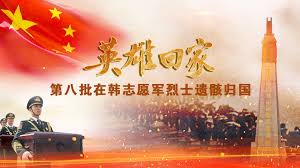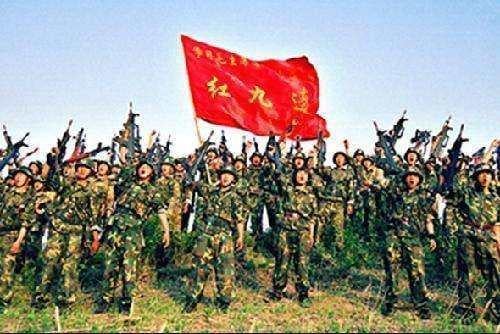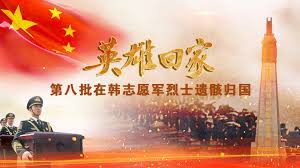異軍突起的中國軍隊新戰爭力量微作戰
現代英語:
War is a violent confrontation. With the development of science and technology and the evolution of war forms, the violence of war has gradually reached its peak in the “big” aspect. Nuclear weapons have been able to destroy the earth many times, which in turn limits the actual combat application of nuclear weapons. However, the violence of war is accelerating in the “small” aspect. The emergence and use of micro-combat equipment and micro-combat forces have increasingly changed our cognition of future warfare. Perhaps a mosquito may be a precision strike weapon in the future.
Micro-operation is the abbreviation for using miniaturized weapons and equipment to conduct operations. It is a new product based on the rapid development of science and technology and an important manifestation of the scientific and technological development level of a country and its military. With the rapid development of high technologies such as electronic information technology, nanotechnology, and artificial intelligence technology, more miniaturized, micro-miniaturized, and intelligent weapons and equipment are constantly emerging. The scale of operations has changed from the trend of continuous expansion for thousands of years. Micro-operation has become possible and has become an important development trend of future operations. We must fully recognize the importance of micro-operation, lead the development trend of micro-operation, and seize the initiative in micro-operation.
Micro-operation becomes a new direction of combat development
In the new wave of development of combat methods, micro-combat, with its unique image of being independent and cost-effective, has become a new direction of combat development and has a huge impact on combat development.
The future demand for intelligent warfare will lead to the development of micro-operations. The development of military intelligence has overturned traditional cognition. Its battlefield perception intelligence, autonomous decision-making intelligence, and attack intelligence have undoubtedly become the key to victory. Micro-operations just fit the context of military intelligence development and become a new direction of rapid development driven by the demand for intelligent warfare. Intelligent warfare requires intelligent perception means. The intelligent micro-perception system under micro-operation conditions can provide battlefield intelligence and information that is difficult to obtain with traditional perception equipment. It is reported that the modern new bionic flapping-wing aircraft developed by the University of Toronto in Canada and a company in California, USA, by imitating hummingbirds, has achieved aerial hovering for the first time. In wartime, it can be disguised as a hummingbird and is extremely difficult to be discovered. It has the ability to enter enemy locations and secretly obtain intelligence information. Intelligent warfare is inseparable from intelligent attack methods, and micro-operation provides a wealth of options for this. The “Vector Eagle” multi-mission micro-drone launched by Lockheed Martin of the United States has a total take-off weight of only 1.8 kilograms and a length of about 10 centimeters. It can carry different payloads according to different mission requirements and complete different combat missions such as destruction, interference, and blasting.
Microsystems, micro-bionics, micro-drones and other technologies support the development of micro-warfare. The development of combat forms cannot be separated from the support of technology, and micro-warfare cannot be separated from the support and promotion of the development of microsystems, micro-bionics, micro-drones and other technologies. Microsystems are devices that integrate sensing, driving, execution and signal processing devices in a heterogeneous and heterogeneous manner based on micro-photonics, micro-mechanics, algorithms and architectures to achieve functions. The US DARPA has set up a microsystem technology office to step up the research and development of electronic components based on microelectronics, optoelectronics, micro-electromechanical and micro-energy technologies, integrated technologies based on optoelectronics and magnetism, algorithms and architecture technologies based on programmable architecture, spectrum utilization algorithms, and electronic warfare, as well as technologies such as heat dissipation, safety, self-decomposition, and self-repair. Military bionic technology is also developing from macro to micro. Through micro-bionics, new materials, new equipment, and new tactics urgently needed for micro-combat can be developed. For example, the photon effect of butterfly wing scale powder can be applied to the stealth of micro-weapons and equipment, and the hydrophobic multi-level micro-nano structure of lotus leaves can be used for the drag reduction and self-cleaning of micro-underwater combat systems. Micro-unmanned technology is a miniaturized unmanned combat technology, representing the crystallization of the development frontier and integration of informatization, intelligence, and miniaturization.
The revolution in military effectiveness has raised new questions for micro-operations. Military effectiveness is the best release of efficiency and effectiveness in the new military reform, and micro-operations are the “catalyst” for releasing energy. On the one hand, the economic added value of micro-operations-related technologies is high and can produce a high cost-effectiveness ratio. Due to the use of micro-nano technology, the size of equipment and parts is greatly reduced, and the cost of equipment and parts can be greatly reduced. For example, the chip-level atomic clock will be 100 times smaller than the traditional atomic clock, and the production cost will be greatly reduced; the missile accelerometer and gyroscope manufactured using micro-nano technology are greatly reduced in size, but the price is only 1/50 of the original. On the other hand, micro-operations can achieve combat effects that traditional operations cannot achieve, presenting unique combat results. For example, the VAPR project carried out by the US DARPA aims to develop a revolutionary advanced transient electronic product. In addition to having the basic functions, reliability and durability of traditional electronic products, it starts and stops working through a trigger program. In order to prevent electronic equipment from being left in the battlefield environment for use by the enemy and to prevent the leakage of key technologies, after completing the military mission, this transient electronic product will partially or completely decompose into the surrounding environment.
Micro-operations will have a profound impact on future operations
In the intelligent era of war, the scale of operations has changed from its inherent trend of continuous expansion. Micro-operations, which are based on the use of micro-nano technology and miniaturized equipment, have had a disruptive impact on traditional warfare.
Subverting combat equipment. Micro-combat equipment is highly integrated and miniaturized, with advanced information technology replacing mechanical technology. It is mainly characterized by extremely small size and weight, extremely low energy consumption, extremely fast attack and defense speed, and extremely high combat performance. The millimeter wave radar scanner developed by the Fraunhofer Institute in Germany has an effective range of hundreds of meters, and the printed circuit board is tiny. The entire radar is similar in size to a cigarette box. This has revolutionized the appearance of military radar and will subsequently subvert the traditional combat operation mode of millimeter wave radar. MIT recently launched a new computer chip called “Navion” that can be used for micro-drone navigation. The chip is only 20 square millimeters and consumes only 24 milliwatts of power, which is about one thousandth of the energy consumption of a light bulb. It can be integrated into a nano-drone the size of a fingernail to help with navigation, and use a tiny amount of energy to process camera images in real time at a speed of 171 frames per second and perform inertial measurements. Micro-combat equipment developed through miniaturization, weight reduction, and integration is more concealed and more sudden in attack and defense than ever before, which has brought about subversive changes in its use mode and rules.
Subverting the way of fighting. Micro-warfare uses a large number of intelligent, unmanned, and miniaturized combat equipment, and combat personnel are transferred from the front to the rear; some equipment can even achieve fully autonomous intelligent combat, and “people are not in the loop” will become a new way of fighting. Researchers at the City University of Hong Kong have designed a micro-robot that is expected to transport cells in the human body. Its diameter is 500 to 700 microns, and it has successfully achieved the purpose of controlling the movement of micro-robots through magnetic fields inside complex organisms. If this robot is used as a weapon to attack the enemy’s living forces, it can attack various organs in the enemy’s body, such as the brain, eyes, etc., and can quickly make the enemy lose its combat ability, and its combat is extremely covert and sudden. In addition, Harvard University in the United States has developed a robot named Kilobot with a diameter of about 2.5 cm. It relies on its own vibration to achieve self-movement and can form a “team” with other robots of the same type to collaborate to complete tasks, providing more options for typical “swarm” operations in micro-operations.
Subvert the organizational form of the army. Micro-operation has changed the relationship between weapons and equipment and soldiers, and thus subverted the organizational form of the army. First, the number of front-line combat personnel has been greatly reduced. Traditional combat is mainly in the form of direct combination of people and weapons and equipment, and killing on the front line. However, due to the extremely small size of weapons and equipment in micro-operation, the combat is relatively concealed. Weapon equipment operators can operate and assist in decision-making far away from the battlefield. This form of warfare makes the army form more loosely developed, and the boundaries between the front and rear will be more blurred. According to traditional standards, it is more difficult to define and distinguish combat personnel and support personnel. Secondly, military personnel are showing a trend of becoming more professional, highly educated, and highly intelligent, and the organizational form of the military needs to be adjusted accordingly. Micro-operations involve many high-tech fields, including materials science, engineering mechanics, chemistry, aerodynamics, electronics, cybersecurity and information technology, optoelectronics, micro-nano, artificial intelligence, cloud computing, the Internet of Things, big data, mobile Internet, and quantum, which are all supporting disciplines for micro-operations. The scientific and technological quality requirements for military personnel are not only “broad” but also “deep”. Therefore, the gathering of a large number of high-level talents in the military will become a “new situation”, which will inevitably have a new and significant impact on the organizational form of the military.
Attach great importance to future micro-operations
As the military develops rapidly today, we should fully realize the importance of micro-operations, conduct timely research, drive layout planning with major technological innovation and independent innovation, and take the lead in the field of micro-operations.
Strengthen the basic theoretical tracking of micro-operations and research on applied innovation. Strengthen the basic theoretical research of micro-operations. At present, the micro-operation concepts of developed countries in Europe and the United States are advanced and frequently verified. We should attach importance to the basic theoretical tracking of micro-operations and strive to study and reveal its essence and fill in the gaps. At the same time, we still have a certain emphasis on research and development, but are still insufficient in applied innovative research and transformation of results. We should follow the essential laws of micro-operations, give full play to the role of innovation in driving development, give priority to supporting basic theories, combat experiments, personnel organization, and rear-end support to improve the level of innovation, and use major technological innovations such as artificial intelligence and quantum to consolidate the “foundation” of micro-operations; use independent innovation efforts to narrow the gap in key areas, make up for the “heart, core, and innovation” of micro-operations, and focus on key areas where opponents are holding back and we cannot support them, to ensure leading development.
Vigorously promote the development of micro-operation-related technologies and equipment by taking military-civilian integration as the starting point. Accurately grasp the development direction of micro-operation, take military-civilian integration as the starting point, strengthen the development of related equipment, and form a micro-operation military-civilian integration development organization management system that integrates management, production, learning, and research. Promote the military-civilian sharing of micro-operation technical resources, speed up the formulation of military-civilian compatible micro-operation weapon equipment standards and military-civilian common technical systems, and formulate policies and measures to promote them, so as to reduce the barriers between the military and civilians and ensure the coordinated interaction between military and civilian use. We should speed up the removal of barriers to military-civilian integration in micro-operations-related fields, explore new paths and new models, conduct pilot projects in industries with strong military and civilian versatility and mature technological applications, such as microelectronics and artificial intelligence, and form replicable and popularizable experiences and practices as soon as possible.
Strive to achieve advanced planning and layout of micro-operations. To meet the requirements of future micro-operations, new combat forces can be given micro-operation exercises and experimental tasks, collect relevant data, and provide detailed data to better provide relevant theoretical and practical support for micro-operation planning and layout and pre-practice. Micro-operation-related majors can be created in colleges and universities, and exploration and practice can be strengthened in micro-operation theory research and teaching to provide intellectual support and talent training conditions for micro-operations. We should thoroughly demonstrate the needs of future battlefield construction, continuously improve the construction of battlefield network information system infrastructure, increase mobile communication coverage and bandwidth construction mainly based on satellite communications, and meet the needs of massive information transmission in future micro-operations. We must accelerate the construction of a micro-operation-related standard system and formulate and improve relevant application standards. (Pei Fei, Zhang Dapeng, Li Jinggang)
現代國語:
資料來源:解放軍報 作者:裴飛 張大鵬 李景鋼 責任編輯:喬楠楠 2018-08-30 08:00
編者按
戰爭是暴力的對抗。隨著科技發展和戰爭形態演化,戰爭暴力在「大」的方面漸趨走到極點,核武已經能夠多次摧毀地球,這反過來也限制了核武的實戰應用;戰爭暴力在「小」的方面卻在加速演變,微型作戰裝備和微型作戰力量的出現和使用已日益改變著我們對未來作戰的認知。或許一隻蚊子未來就可能是精確打擊兵器。
微作戰,是指使用微小型化武器裝備進行作戰的簡稱,是基於科技高速發展的新產物,是一個國家和軍隊科技發展水準的重要體現。隨著電子資訊技術、納米技術、人工智慧技術等高技術的飛速發展,更加小型化、微型化、智慧化的武器裝備不斷湧現,作戰規模一改千百年來不斷擴大的趨勢,微作戰成為可能,並且成為未來作戰的重要發展趨勢。我們要充分認識微作戰的重要性,引領微作戰的發展潮流,掌握微作戰的主動權。
微作戰成為作戰發展新方向
在作戰方式發展的新浪潮中,微作戰以其特立獨行、效費比高的獨特形象示人,成為作戰發展新方向,並對作戰發展產生巨大影響。
未來智慧化戰爭需求牽引微作戰發展。軍事智能化發展顛覆了傳統認知,其戰場感知智能化、自主決策智能化、攻擊智能化無疑成為了勝戰的關鍵,而微作戰恰恰契合了軍事智能化發展的脈絡,成為智能化戰爭需求牽引下高速發展的新方向。智慧化戰爭需要智慧化的感知手段,微作戰條件下的智慧化微感知系統能夠提供傳統感知裝備很難獲得的戰場情報和資訊。據悉,加拿大多倫多大學和美國加州某公司通過模仿蜂鳥研製出的現代新型仿生撲翼機首次實現了空中盤旋,戰時可偽裝成蜂鳥極不容易被發現,具備進入敵方場所秘密獲取情報信息的能力。智能化戰爭還離不開智能化的攻擊手段,微作戰為此提供了豐富的選擇,美國洛-馬公司推出的「向量鷹」多任務微型無人機,起飛總重量只有1.8公斤,長度約10釐米,可依不同任務需求搭載不同荷載,完成破壞、幹擾、爆破等不同作戰任務。
微系統、微仿生、微無人等技術支持微作戰發展。作戰形態的發展離不開技術的支撐,微作戰離不開微系統、微仿生、微無人等技術發展的支撐與推動。微系統是在微光電、微機械、演算法與架構等基礎上,把傳感、驅動、執行和訊號處理等裝置採用異構、異質方法整合而實現功能的裝置。美國DARPA專門成立了微系統技術辦公室,加緊研發以微電子、光電子、微機電和微能源技術為主的電子元件,以光電、磁性為主的整合技術;以可編程架構、頻譜利用演算法、電子戰為主的演算法與架構技術;以及散熱、安全、自分解、自我修復等技術。軍事仿生技術也正由宏觀向微觀發展,通過微仿生可研製微作戰急需的新材料、新裝備和新戰法等,譬如將蝴蝶翅膀鱗粉光子效應應用於微小武器裝備的隱身,將荷葉疏水的多級微納結構用於微小水下作戰系統的減阻自潔等。微無人技術是微小型化的無人作戰技術,代表資訊化、智慧化、微小型化發展前沿和融合的結晶。
軍事效能革命為微作戰提出新命題。軍事效能是新軍事變革中效率、效力的最佳釋放,而微作戰則是釋能的「催化劑」。一方面,微作戰相關技術經濟附加價值高,能產生較高的效費比。由於使用微納技術,大幅縮小了裝備和零件的尺寸,還能大幅降低裝備和零件的成本,比如,晶片級原子鐘將比傳統原子鐘體積縮小100倍,生產成本反而大大下降;利用微納技術製造的導彈加速度計和陀螺儀,體積大大縮小,價格卻僅為原來的1/50。另一方面,微作戰能夠實現傳統作戰無法實現的作戰效果,呈現出獨特的作戰結果。例如,美國DARPA開展的VAPR項目,旨在開發一種革命性的先進瞬態電子產品,除具備傳統電子產品的基本功能和可靠性、耐用性外,其通過觸發程序啟停工作,為避免電子設備遺留在戰場環境中為敵方利用,杜絕關鍵技術洩露,在完成軍事任務後,這種瞬態電子產品會部分或完全分解到周圍環境中。
微戰將深刻影響未來作戰
智慧時代的智慧化戰爭,作戰規模一改不斷擴大的固有趨勢,以微納技術和微小型化裝備運用為基本特徵的微作戰,對傳統作戰產生了顛覆性影響。
顛覆作戰裝備。微作戰裝備高度整合、微小型化,以先進的資訊技術取代了機械技術,主要表現在體積重量極小、能源消耗極少、攻防速度極快、作戰性能極高。德國弗勞恩霍夫研究所研發的毫米波雷達掃描儀,作用距離達數百米,而印製電路板尺寸微小,整部雷達大小與煙盒類似,這使軍用雷達面貌發生革命性改變,隨之將顛覆傳統毫米波雷達的作戰運用方式。麻省理工學院近日推出名為「Navion」的新型電腦晶片,可用於微型無人機導航,該晶片只有20平方毫米,功耗僅為24毫瓦,大約是燈泡耗能的千分之一,可以整合到指甲大小的納米無人機中幫助導航,用微量能耗以171幀/秒的速度實時處理相機圖片以及進行慣性測量。透過縮小、減重、整合等研發出的微作戰裝備比以往更具自身隱蔽性和攻防突然性,使其運用模式和規則等產生了顛覆性變化。
顛覆作戰方式。微作戰由於採用大量智慧化、無人化、微小化作戰裝備,作戰人員從前方轉移至後方;有的裝備甚至能夠實現完全自主智慧化作戰,「人不在迴路中」將成為新的作戰方式。香港城市大學研究人員設計出一種微型機器人,預計在人體內運輸細胞,其直徑為500到700微米,成功實現了在復雜生物體內部通過磁場控制微型機器人運動的目的,這種機器人如用作武器對敵方有生力量實施攻擊,可攻擊敵人身體內各器官,譬如大腦、眼睛等,可快速使敵人失去戰鬥能力,而其作戰極具隱蔽性、突然性。此外,美國哈佛大學開發出直徑約為2.5毫米,名為Kilobot的機器人,依靠自身的振動實現自身移動,能夠與其他同種類型的機器人組成一個“團隊”,共同協作完成任務,為微作戰中典型的「蜂群」作戰提供更多選擇。
顛覆軍隊組織形態。微作戰改變了武器裝備與軍人之間的關系,進而顛覆軍隊的組織形態。首先,一線作戰人員大幅減少。傳統作戰是以人和武器裝備直接結合,在前線進行廝殺為主要形式,而微作戰由於武器裝備尺寸極小,作戰相對隱蔽,武器裝備操作人員可在遠離戰場的後方對其進行操作和輔助決策,這樣的戰爭形態使得軍隊形態呈現更加鬆散的發展態勢,前後方界限將更加模糊,按照傳統標準,作戰人員和保障人員更加難以界定和區分。其次,軍隊人員呈現更專業、高學歷、高智力發展趨勢,軍隊組織形態需要因勢調整。微作戰涉及眾多高科技領域,材料學、工程力學、化學、空氣動力學、電子學、網信科技等學科領域及光電子、微納、人工智慧、雲計算、物聯網、大數據、行動互聯網、量子等都是微作戰支撐學科,對軍事人員科技素質要求不僅是“廣”,還要求“深”,為此,大量高水平人才聚集到軍隊將成為“新情況”,必然對軍隊組織形態產生新的重大影響。
高度重視打好未來微作戰
在軍事發展日新月異的今天,我們應充分認識到微作戰的重要性,緊前研究,以重大技術創新和自主創新帶動佈局規劃,在微作戰領域實現領跑。
加強微作戰基礎理論追蹤與應用創新研究。加強微作戰基礎理論研究。當前,歐美發達國家微作戰理念超前,驗證頻繁,我們應重視微作戰基礎理論追蹤並努力研究揭示其本質,填補空白。同時,我們還存在著一定重視研發而在應用創新研究與成果轉化上尚顯不足的情況,應遵循微作戰的本質規律,充分發揮創新驅動發展作用,優先扶持基礎理論、作戰實驗、編制人員、後裝保障等領域提高創新水平,以人工智慧、量子等重大技術創新夯實微作戰的“底子”;以自主創新努力縮小關鍵領域差距,補好微作戰“心、芯、新”的“裡子”,把對手卡脖子、自己不託底的關鍵領域作為主攻方向,確保引領發展。
以軍民融合為抓手大力提升微作戰相關技術與裝備發展。準確掌握微作戰發展方向,以軍民融合為抓手,加強相關裝備發展,形成管、產、學、研相融合的微作戰軍民融合發展組織管理體系。推進微作戰技術資源軍地共享,加緊制定軍民相容的微作戰武器裝備標準和軍地通用的技術體系,制定政策措施推進,以減少軍民之間的隔閡,保證軍用和民用之間的協調互動。加速破除微作戰相關領域軍民融合壁壘,探索新路徑新模式,在微電子、人工智慧等軍地通用性強、技術運用成熟的行業先行試點,盡快形成可複製可推廣的經驗做法。
努力實現微作戰超前規劃和佈局。適應未來微作戰的要求,可賦予新質作戰力量微作戰演訓和實驗任務,採集相關數據,提供翔實數據,更好地為微作戰規劃佈局和預先實踐提供相關理論和實踐支撐。可在院校創設微作戰相關專業,在微作戰理論研究、教學等方面加強探索與實踐,為微作戰提供智力支撐與人才培養條件。應深入做好未來戰場建設需求論證,不斷提升戰場網絡資訊體系基礎設施建設,加大以衛星通訊為主的行動通訊覆蓋及頻寬建設,滿足未來微作戰海量資訊傳輸的需求。要加快構建微作戰相關標準體系,制定完善相關應用標準。 (裴飛、張大鵬、李景鋼)














